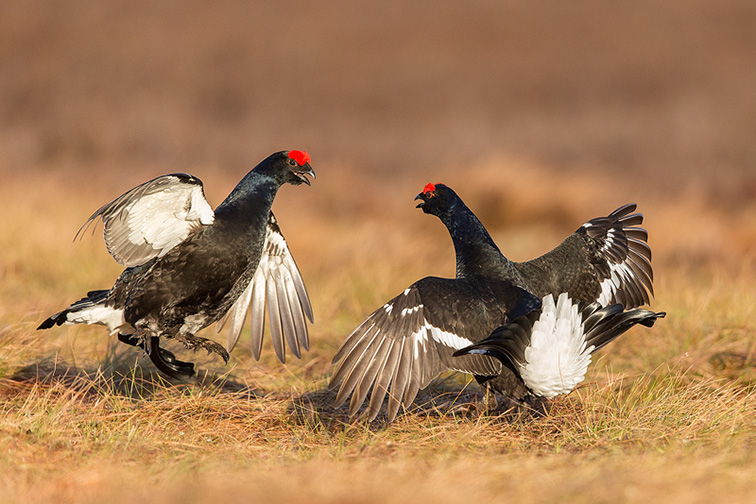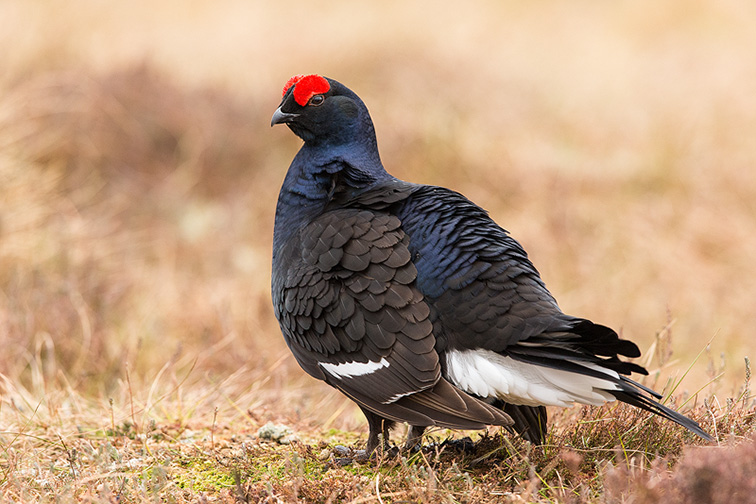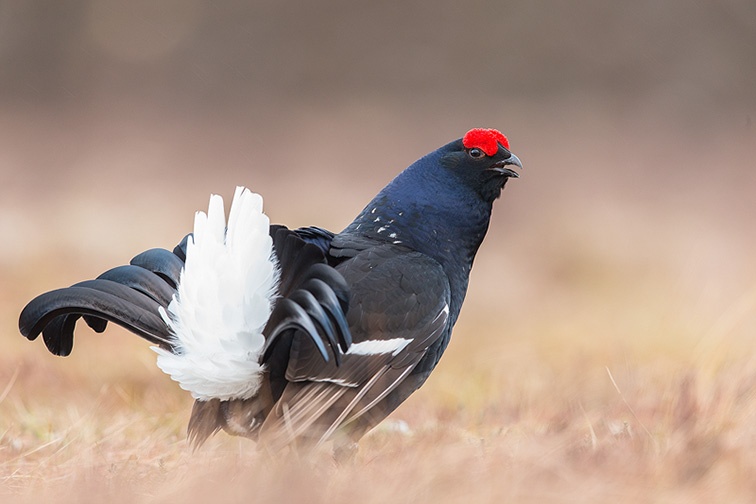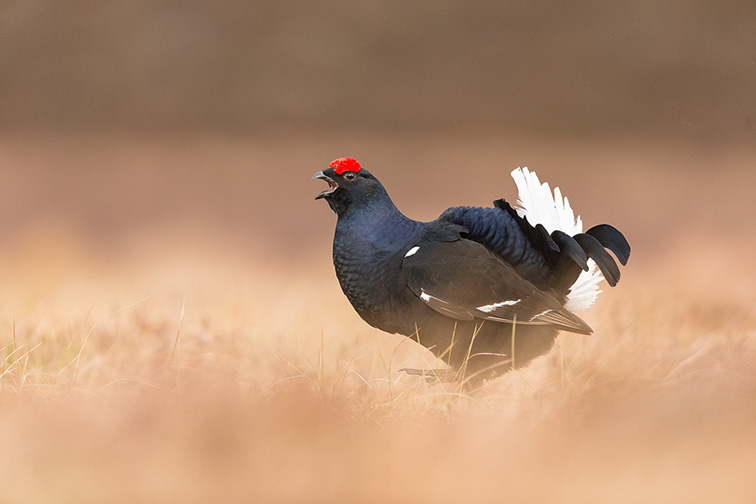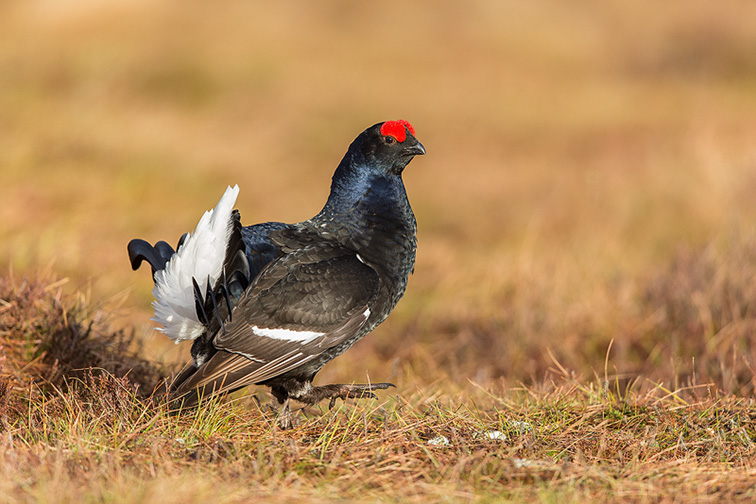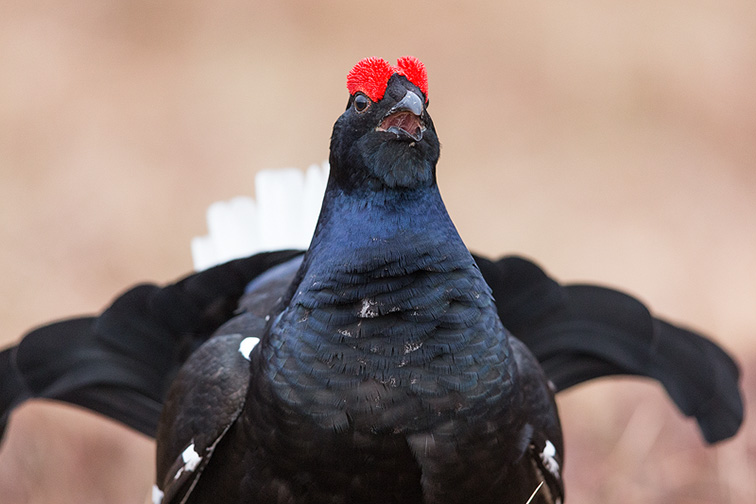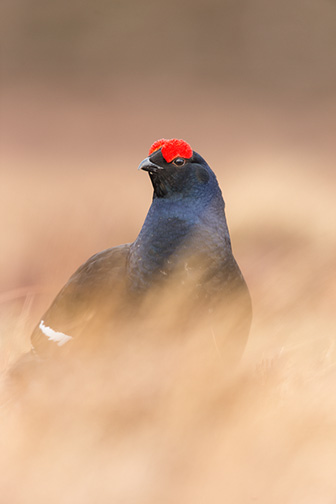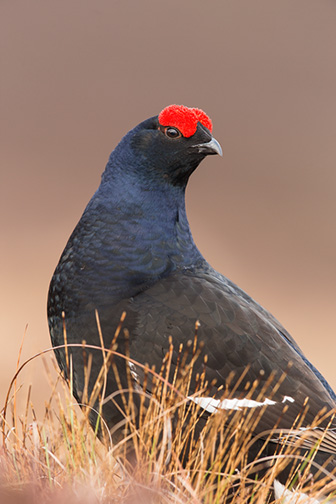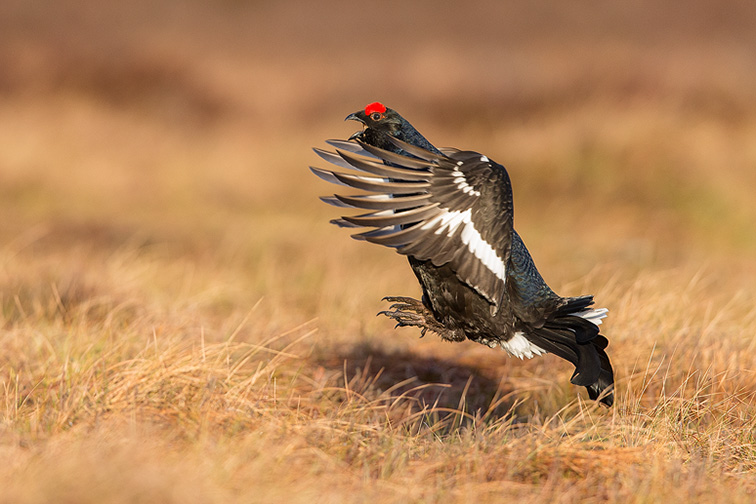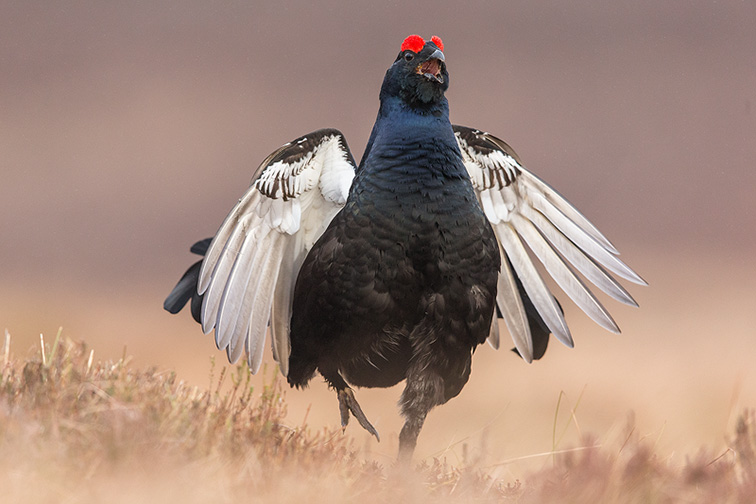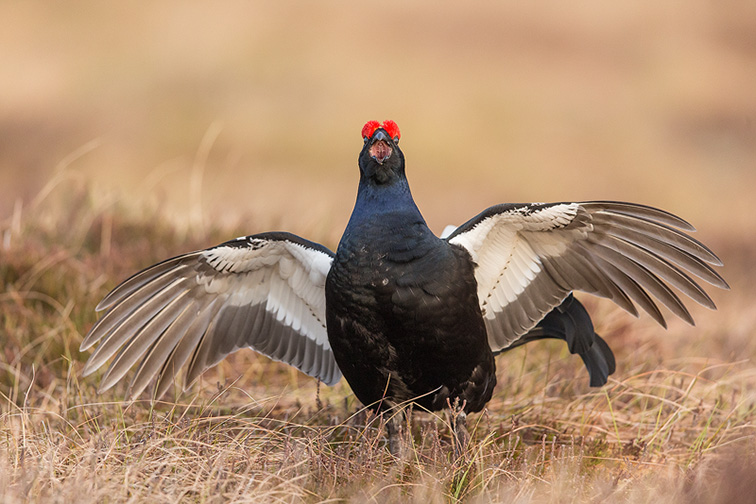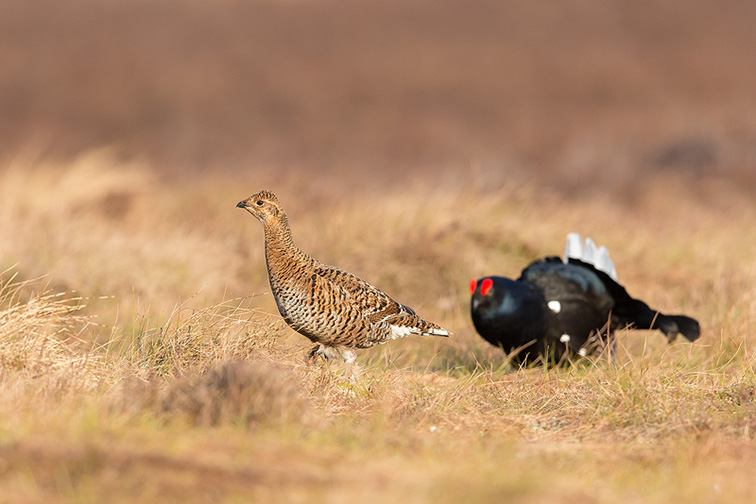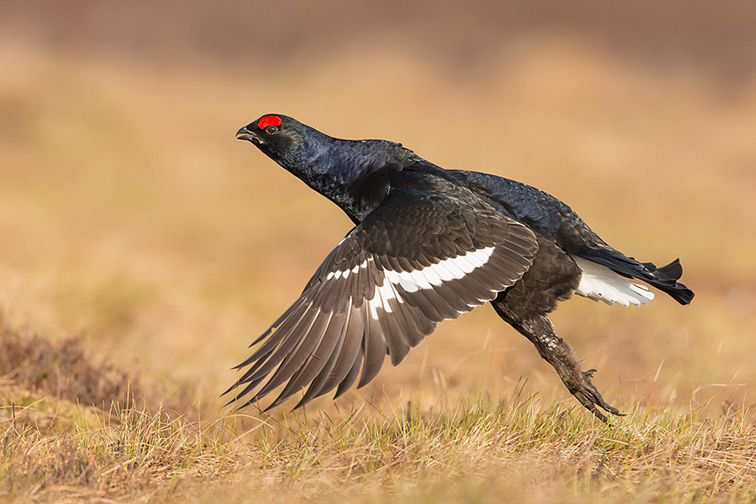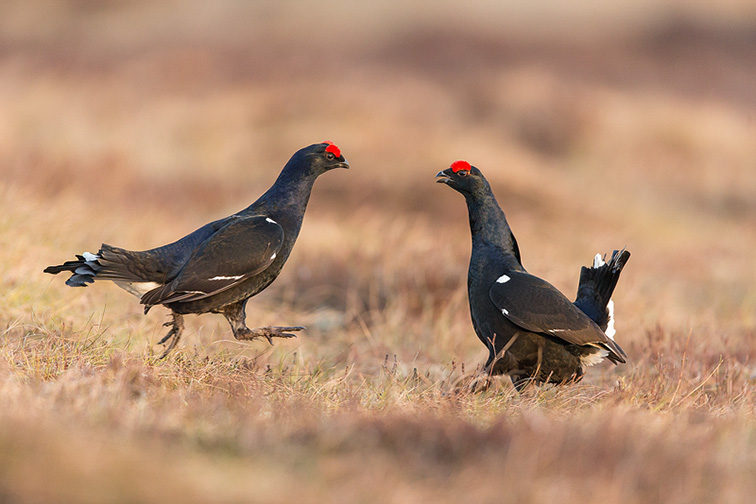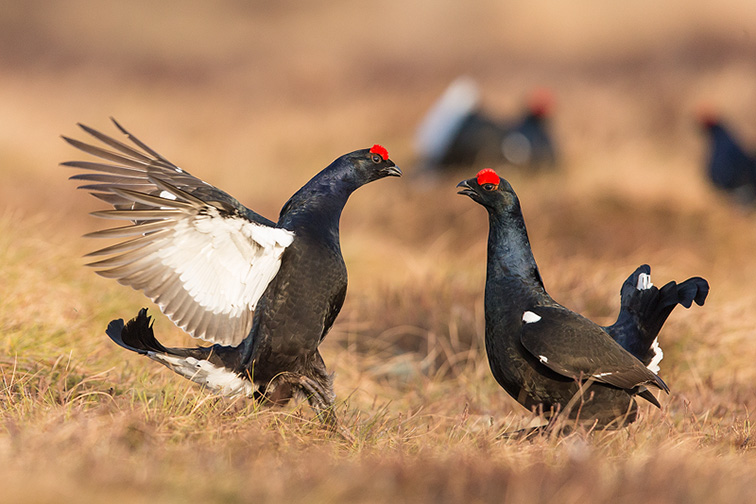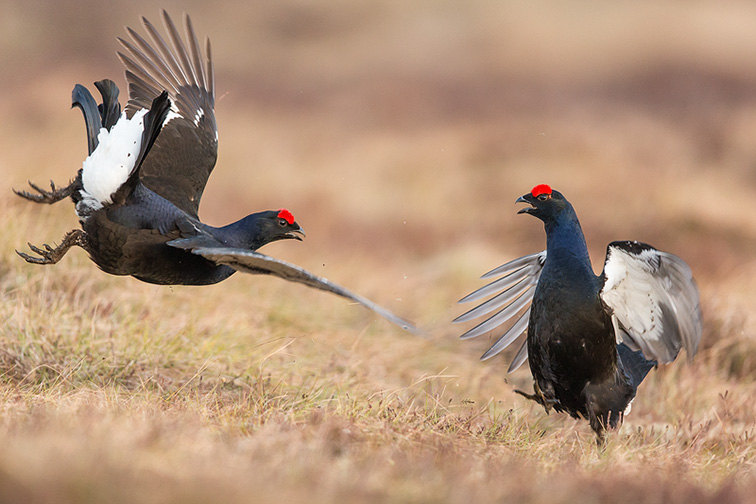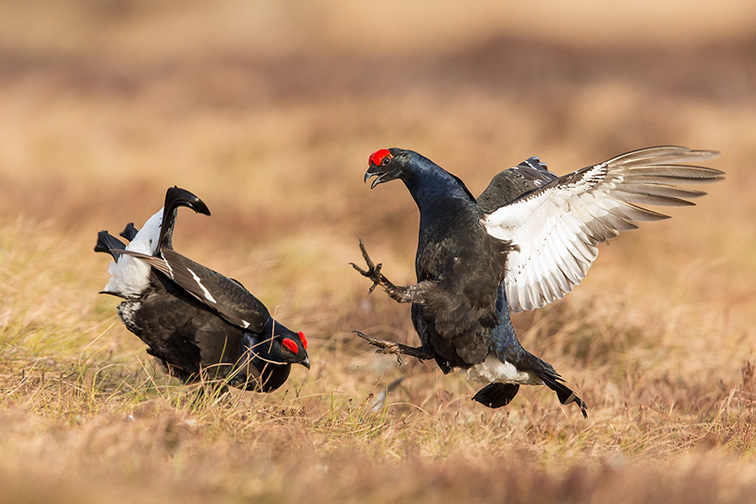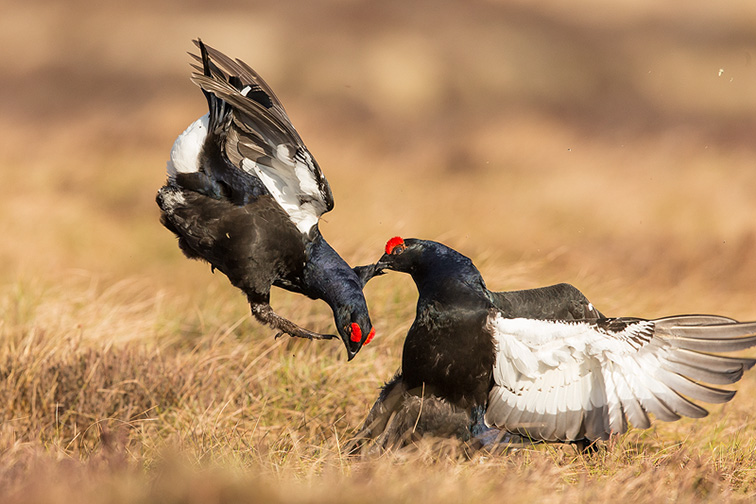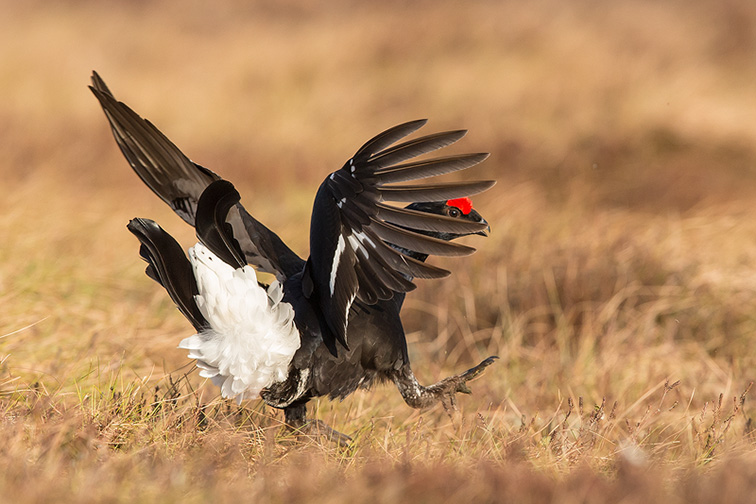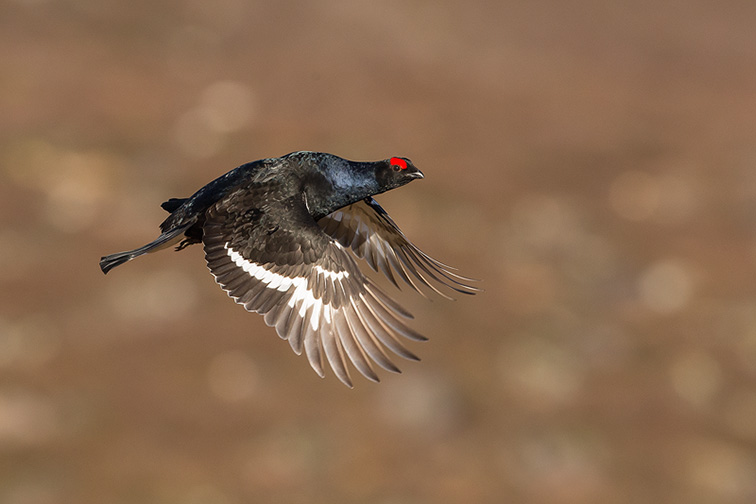Hide Rental
Black Grouse at lek
9th - 30th April 2021 (please enquire for up to date availability)
£169 per person for 1 day; £299 pp for 2 days; £399 pp for 3 days
Deposit: £125 per person
Black grouse males gather at their traditional moorland leks at dawn each morning from as early as January although activity peaks during April wihen the females (greyhens) visit the lek to check out potential mates. The dates below coincide with peak activity and provide the very best chance to capture the lekking behaviour in full swing.
The birds first arrive on the lek site in the twilight of dawn and you can usually begin to photograph about 30 minutes before sunrise using high ISO settings. The site is in a very open situation and receives good light. On a sunny day the lek receives direct sunshine approximately 45 minutes after sunrise. On average you can expect 2-3 hours of good light for photography. in 2020 there were up to 7 active males displaying on the lek arena, with the nearest birds between 10m - 20m from the hide.
The males defend their ‘patch’ on the lek and there can be frequent fights between rival birds, with the potential for spectacular images. The males also perform flutter jumps, leaping high into the air, as they attempt to attract nearby females. The greyhens can visit the lek at any time but it is typical for them to arrive before sunrise. Between 2-6 females may be seen but some days they be absent, especially in poor weather. Activity usually subsides around 0830 and the birds will typically leave the lek sometime before 0900.
The lek (display area) is on a river flood plain on short tussocky grass, with excellent views of the main lekking arena. There are two semi-permanent hides (1 x 2-seater; 1 x 1-seater) sited on a solid wooden platform. Each person has a single porthole. Tripod required. You will be guided to the hide, which involves a 5-10 minute walk along a good track and then a further 10 minute walk over level but rough ground (walking across heather moorland). You should be of reasonable fitness and able to carry your pack and tripod for 20 minutes in the dark.
Recommended Camera equipment
You will ideally need a lens in the range of 300mm to 500mm. A longer lens is great for close-up portraits while a shorter lens will allow you to shoot birds fighting and birds in habitat. A telephoto zoom lens is ideal. A camera that is capable of shooting in low light using high ISO settings with low noise is an advantage although not essential. You will typically want to shoot using ISO settings of between 400 and 6400, starting at the higher settings in the first light of the day.
Further information available on request.
9th - 30th April 2021 (please enquire for up to date availability)
£169 per person for 1 day; £299 pp for 2 days; £399 pp for 3 days
Deposit: £125 per person

